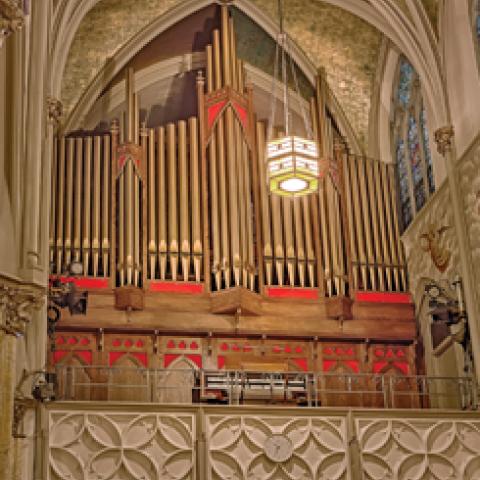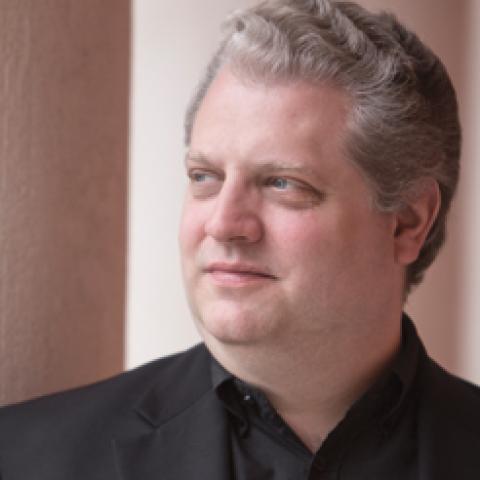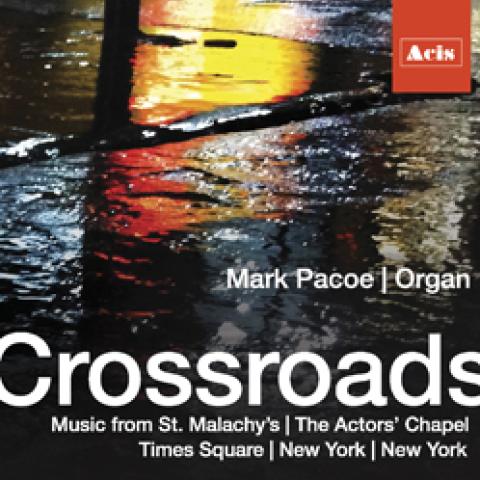Acoustics. See Bethards.
Apple, Warren. New Organ Music. Jan 12-13, Sept 13-14, Oct 14, Nov 10
__________. New Recordings. July 12, Aug 10, Oct 12-13, Dec 10, 12
Art of the Fugue. See Kellner.
Bach. See Kellner.
Baggia, Aldo J. New Recordings. Apr 8, 10, May 12, Oct 12, Nov 8-9, Dec 8, 10
__________. Monumental Organs in Monumental Churches: The Brick Gothic Phenomenon in Northern Germany. Aug. 18-21*
Bernthal, John. Teaching Organ Students on the Renovated Reddel Memorial Organ. Feb 19
Bethards, Jack M. Reverberation: serving sound or serving music? An heretical view of acoustics.# Nov 14-15
Bohnert, David. New Organ Music. Aug. 10-12
Book Reviews. See Dean, Hartman, Marigold, Simmons.
Brugh, Lorraine S. The Reddel Memorial Organ. Jan 18
Buxtehude. See Couch.
Calhoun. See Huestis.
Carillon News. See Swager.
Church Music. See West.
Clark, J. Bunker. Creative Continuo: or Examples of Enlivening a Figured Bass on the Harpsichord. Apr 15-17+
Coleberd, R. E. August Gern and the Origins of the Pitman Action. Jun 16-18#
__________. Three Kimball Pipe Organs in Missouri. *† Sept 16-21
Cornils, Ray. Summer Institute for French Organ Studies. Jun 14-15
Couch, Leon W. III. Musical Rhetoric in Three Praeludia of Dietrich Buxte- hude. Mar 14-18+#
__________. Book Review. Oct 8-12
Dean, Ronald E. Book Reviews. Sept. 10-11.
deTar, Vernon. See Wechsler.
Durman, Bernard. New Recordings. Mar 8-9, Apr 8, May 12-14, June 11-12, Sept 12-13, Nov 6, 8
Dzeda, Joseph. See Webster.
Editorial. Jan 2
Eifrig, William F. (Reddel Memorial Organ) The Process of Restoration and Enlargement. Feb 18-19
Ellis, Laura. New Organ Music. Jan 13-14, Mar 10-11, May 14
Faulkner, Quentin. Deceptive Pivot Points in J.S. Bach's Orgelbüchlein: similar passages that lead in different directions. Dec 16+
French Organ Music Seminar. See McAfee.
Friesen, Michael. (Reddel Memorial Organ) A Brief History of the Organ. Jan 19-20
Gehring, Philip. The Reddel Memorial Organ at Valparaiso University: The First 30 Years. Feb 18
German Organs. See Baggia.
Harpsichord News. See Palmer.
Hardwick, Peter. The Organ Works of Basil Harwood. May 18-21*+
__________. New Organ Music. Aug 12, Sept 13-14, Oct 13-14, Nov 10-12, Dec 12-14
__________. New Recordings. Nov 9-10, Dec 10
Hartman, James. Book Reviews. Feb 8, Mar 8, Apr 8, 10, May 8-12, Jun 8-10, Nov 6, Dec 7-8
__________. Prodigy Organists of the Past. Dec 20-21
Harwood, Basil. See Hardwick.
Hohman, Frederick. A student reviews his mentor: David Craighead inaugural recital. Apr 18-19
Holland, Jon. New Organ Music. Mar 9-10,
Huestis, Herbert. Project 2000: The Diapason Index enters Y2K. Jan 14, Feb 12, Apr 10.
__________. How to flip reeds to check for tuning stability. May 22*
__________. OrganNet Report. Sept 15
__________. Repair of reed resonators. Jun 13*
__________, and Calhoun, David. Twin Perspectives on AGO Seattle 2000, Part 1. Oct 15-17*
__________. AGO Seattle 2000: Part 2. Nov 16-18*
Hughes, Sarah Mahler. New Recordings Jun 10-11.
Jean, Martin. (Reddel Memorial Organ) Behind the Scenes of the Organ Renovation. Feb 18
__________. Göteborg International Organ Academy 2000. Apr 12-14*
Jones, Peter. Residence Organ: The Isle of Man. Oct 18-21 *†#
Keck, Ray M. Playing for Apollo. The Technical and Aesthetic Legacy of Carl
Weinrich. Feb 13-17
Kellner, Herbert Anton. Johann Sebastian Bach and Die Kunst der Fuga. Mar 13*+#
__________. Die Kunst der Fuga: J. S. Bach's Prefatory Message and Implications. May 15-17 *+#
Kimball. See Coleberd.
Leppert-Largent, Anna M. Robert Rayfield: In Memoriam. Mar 12*
Letters to the Editor. Jan 2, Mar 2, Apr 2, May 2, Jun 2, Aug 2, Oct 6, Nov 2-3, Dec 4
Marigold, W. G. New Recordings. May 14, June 11, Jul 10-12, Aug 8-10, Sept 11-12, Oct 12, Nov 8, Dec 8
__________. Book review. Aug 8, 10
McAfee, Kay. French Organ Music Seminar July 5-17, 1999. Jan 15-17*
__________. New Organ Music. Jun 12, Jul 12
McCray, James. Music for Voices & Organ. Jan 11-12, Feb 10, Mar 11, Apr 6, May 6, 8, Jun 8, Jul 8, 10, Aug 8, Sept 8, Oct 6-8, Dec 14
McFarlane, Karen.* Retirement. Dec 15
Morton, Jerry D. OHS Convention 2000. Jul 14-15*
Music for Voices & Organ. See McCray.
Neighbarger, Randy. New Recordings. Jan 12, Feb 10
Nelson, Leon. New Handbell Music. Aug 12, Sept 14, Oct 14, Nov 12, Dec 14
New Handbell Music. See Nelson
New Organ Music. See Apple, Bohnert, Ellis, Hardwick, Holland, McAfee, Rigler, Schou.
New Recordings. See Apple, Baggia, Durman, Hardwick, Hughes, Marigold, Neighbarger.
Organ Recitals. Jan 26-27, Feb 24-25, Mar 24-25, Apr 24-25, May 27-29, Jun 24, Jul 27-28, Aug 27-28, Sept 28, Oct 27-28, Nov 23-24, Dec 27-28
OrganNet. See Huestis.
Orgelbüchlein. See Faulkner.
Palmer, Larry. Harpsichord News. Mar 6, May 6, Jun 6-7, Jul 8,* Aug 7-8,* Sept 8, Dec 8
Panning, John A. (Reddel Memorial Organ) The Organ Builder's Perspective. Jan 18-19
Pitman action. See Coleberd.
Prodigy. See Hartman.
Project 2000. See Huestis.
Rayfield, Robert. See Leppert-Largent.
Reeds. See Huestis.
Residence organ. See Jones.
Rigler, Ann Marie. New Organ Music. May 14, June 12, Aug 10, 12
Schmidt, Dennis. University of Michigan Historic Organ Tour XL. Apr 11*
Schou, Larry. New Organ Music. Jan 13, Oct 13, Nov 12
Scott, John. See Van Oyen.
Simmons, Morgan. Book Review. Apr 6-7
Skinner. See Webster.
Spicer, David. Esma Beth Anderson Clark—What a Teacher! Nov 13*
Swager, Brian. Carillon News. Jan 8, 10,11* Feb 6-8,* Jun 6, Jul 6, 8, Dec 6*
(Valparaiso University) The Fred and Ella Reddel Memorial Organ at Valparaiso
University. Part 1, Jan 18-20.*† Part 2, Feb 18-19.* See also Bernthal, Brugh, Eifrig, Friesen, Gehring, Jean, Panning
Van Oyen, Marcia. An Interview with John Scott. Jul 16-18*
Webster, Richard, and Joseph Dzeda. Ernest M. Skinner Opus 327: St. Luke's Episcopal Church, Evanston, Illinois. Jul 19-21*
Wechsler, Malcolm. Vernon deTar Memorial Service, November 14, 1999. Feb
12
Weinrich, Carl. See Keck.
West, Martin. 20th Century Church Music in Germany: An Overview. Aug. 14-17.*
Williams, Carol. Concert Tour: Europe 2000. *† Dec 17-19
Appointments
Allen, Patrick,* to Grace Church, New York, NY. Mar 3
Andrews, Colin,* to East Carolina University, Greenville, NC. Jul 3
Bates, Carol Henry, to Editor, Early Keyboard Journal. Dec 3
Brown, James Russell,* to Vice President of Administration, Music Institute of Chicago, IL. Jun 3
Bush, John Emory,* to St. Matthew's Episcopal Cathedral, Dallas, TX. Dec 3
Butera, Jerome,* to St. Mary's Episcopal, Park Ridge, IL. Sept 3
Cockburn, Neil,* to the Mount Royal College Conservatory Calgary Organ Academy, Calgary, Canada. Sept 3
Davidsson, Hans,* to the Eastman School of Music, Rochester, NY. Sept 3
Fiore, George Halverson, to Associate Conductor for Choral Activities, Seattle Symphony, Seattle, WA. Oct 3
Gandre, James, to Dean of the College of the Performing Arts, Roosevelt University, Chicago. Dec 3
Gooding, David,* to Old Stone Church, Cleveland, OH. Sept 3
Hargraves, Ian,* to design and engineering team, Retuer Organ Company. Oct 3
Hokans, Henry, to St. George's Episcopal, Durham, NH. Apr 3
Jackson, Roger, to Chairman of the Board, Calgary International Organ Foundation. Jan 3
Janzer, Dennis,* to Coral Gables Congregational, Coral Gables, FL. Dec 3
Johnson, Erica, to Organ Scholar at The Memorial Church, Harvard Univ. Jan 4
Johnson, Jeffrey C., to Grace Church, New York, NY. Oct 3
Johnson, Kyle,* to Missouri Valley College, Marshall, MO. Aug 3
Jones, Robert, to St Luke's Anglican, Ottawa, Ontario, Canada. Mar 3
Kaltenbach, Janet, to General Manager, the American Boychoir. Aug 3
Kinnaugh, Norm, to drafting/engineering department, Reuter Organ Company. Mar 3
Lindley, Simon, to President-elect, RCO, England. Jan 2
Lowry, Douglas, to the College-Conservatory of Music, University of Cincinnati, Cincinnati, OH. Sept 3
Miller, Aaron David,* to Fourth Presbyterian, Chicago, IL. Jan 3
Mills, Ralph, to First United Meth-odist, Charlottesville, VA. Aug 3.
Oberlin, Marta, to Sales Manager, Shawnee Press. Apr 3
Pape, Uwe, to principal consultant, St. Mary's Church, Berlin, Germany. Mar 4
Rakich, Christa,* to the Church of the Immaculate Conception, Boston, MA. Aug 3
Richerby, Neil,* to Managing Director, J.W. Walker, Suffolk, England. Jun 3
Roberts, Stephen,* to St Peter RC, Danbury, CT. Jan 3
Sambach, Cj,* to Holmdel Community United Church of Christ, Holmdel, NJ. Jun 3
Schroeder, Carl E.,* to Zion Lutheran, Harrisburg, PA. May 3
Stinson, Russell,* to Lyon College, Batesville, AR. Jan 3
Tarrant, Jeremy David,* to the Cathedral Church of St. Paul, Detroit, MI. Jul 3
thor-Straten-Mohr, Patricia, to Director of Publications, Shawnee Press. Apr 3
Trapp, Lynn Michael, to Principal Artistic Director, The Marianne Webb & David N. Bateman Distinguished Organ Recital Series. Apr 3
Wilkinson, Cathryn, to Concordia University, River Forest, IL. Nov 3
Williams, Keith,* to Director of Organ Service & Tuning, Buzard Pipe Organ Builders. Feb 3
Zager, Daniel,* to librarian, Eastman School of Music's Sibley Music Library. Oct 4
Zwilling, Mark,* to Cathedral of Hope, Dallas, TX. Jan 3
Honors and Competitions
Arcus, David,* awarded Holtkamp-AGO Award in Organ Composition. Apr 3
Biggers, Jonathan,* received Alumni Arts Award. Apr 3
Bischof, Justin,* awarded first prize in National Competition in Organ Improvisation. Oct 3
Boerema, Hayo,* awarded first prize, improvisation. Mar 3
Bringle, Mary Louise, named winner of Hymn Writing Contest. May 3
Burks, Charles,* wins Gruenstein Memorial Organ Competition. Aug 6
Chenault, Elizabeth and Raymond, * honored for 25 years as Organists and Choirmasters. Jul 3
Cho, Jin Sun,* wins Arthur Poister Competition. Jul 2
Choi, Ji-Yoen, awarded first prize in National Young Artists Competition in Organ Performance. Oct 3
Deák, Lázló,* awarded second prize, improvisation, and concerto prize. Mar 3
Farmer, Kristin Gronning, receives OHS Distinguished Service Award. Feb 3
Foss, Lukas, received Gold Medal for Music from American Academy of Arts and Letters. Oct 4
Glasgow, Robert,* honored with 75th birthday recital. May 2
Heaton, Charles Huddleston, included in 18th edition of Who's Who in the World. Nov 4
Holmes, Brian, receives award in Plymouth Music Series Christmas Carol Contest. Dec 2
Jarnot, Camilla, receives Margaret Power Biggs Research Grant. Aug 3-4
Kim, Sung Joo,* wins second prize in Gruenstein Memorial Organ Competition. Aug 6
Lane, Christian, wins organ performance competition at Albert Schweitzer Organ Festival. Dec 3
Lovett School Chamber Choir, Raymond Chenault,* director, wins National Grand Championship in MusicFest Orlando 2000 Choral Competition. Sept. 3
Lindner, Tobias, wins first prize, Bruges Organ Competition. Dec 2
McFarlane, Karen,* honored upon retirement. Dec 15
McManis, Charles W., honored with 87th birthday recital. Aug 4.
Myers, Scott,* wins Vernon deTar Scholarship Competition. Oct. 3
Noehren, Robert,* celebrates 90th birthday. Dec 3
Parker, Alice, receives AGO Distinguished Composer Award. Oct 4
Peek, Betty & Richard,* honored at retirement. Feb 4
Porter, Emily Maxon, receives award in Plymouth Music Series Christmas Carol Contest. Dec 2
Roth, Daniel,* awarded the Prix Florent Schmitt. Jan 4
Schreiber, Lawrence P.,* named minister of music emeritus, National City Christian Church, Washington, DC. Aug 4
Stein, Yoav, receives MTNA Collegiate Artist Organ Award. Jul 3
Toth, Keith S.,* received Golden Ear Award. Mar 4
Wetzler, Robert P., granted A.S.C.A.P. composer award. Aug 4
Yoon, Sujin,* wins third prize and audience prize at Gruenstein Memorial Organ Competition. Aug 6
Obituaries
Chevalier-Duruflé, Marie-Madeleine. Jan 8
Childs, Barney. Apr 4
Davis, Dwight J. May 4
Fauquet, Vivien Johnson. Jan 8
Ferris, William.* Jul 6
Groom, Lester H.* Jul 6
Hovhaness, Alan.* Sept 6
Pennells, Andrew.* Mar 4
Pettinga, Paul. Oct 6
Spelman, Leslie*. Aug 6.
Wheeler, Scott E. May 4
Whitehead, William. Dec 4
Organ Stoplists
Andover
University of North Carolina, Greensboro, NC. 3/47,* May 1, 23
(Hook) Cheney Hall, Manchester, CT. 2/16,* Dec 23
Bedient
Sharon United Methodist, Charlotte, NC. 2/28, tracker,* Jul 24
Buzard
Our Savior's Lutheran, Rockford, IL. 2/30,* Dec 1, 22
Cook
Our Saviour's Lutheran, Bremerton, WA. 2/21,* Nov 1, 19
Dobson
Valparaiso University, Valparaiso, IN. 4/102,* Jan 1, 18-20
Fabry (Wicks)
St John's Episcopal, Sturgis, MI. 3/31,* Jan 22
First Presbyterian, Harvard, IL. 2/15,* Feb 20
United Methodist , Hinckley, IL. 2/13,* Oct 23
(Moller rebuild) Evangelical United Methodist, Racine, WI. 3/37,* Nov 20
Farmer (Pilcher restoration)
Galloway Memorial Episcopal, Elkin, NC. 1/7 tracker,* Jan 22
Glatter-Götz/Rosales
Claremont United Church of Christ, Claremont, CA. 3/77 tracker,* Mar 20
Goulding & Wood
St. Paul's Episcopal, Wilmington, NC. 9-rank antiphonal division added,* Sept 24.
Jaeckel
Redeemer Lutheran, Rice Lake, WI. 1/4 tracker,* Aug 24
Sturgeon Bay Moravian Church, Sturgeon Bay, WI. 2/23 tracker,* Sept 24
First Congregational United Church of Christ, Sarasota, FL. 2/28 tracker,* Oct 23
Kegg
St. Paul's Episcopal, Canton, OH. 4/49,* Sept 23
Kney
Residence of Dr. Andrew John, Oklahoma City, OK. 2/18 tracker,* Jul 24
Lauck
Pillar Christian Reformed Church, Holland, MI. 3/31, electric. Dec 24
Lewis & Hitchcock
Residence of Dr. Carl Schwartz, Silver Spring, MD. 2/3 tracker,* Jul 23
Murphy (Hook restoration)
Episcopal Church of the Epiphany, Agora, CA. 2/20 tracker,* Sept 1, 22.
Nichols & Simpson
Pulaski Heights United Methodist, Little Rock, AR. 4/73,* May 24
Hendrix College, Conway, AR. 2/34,* Mar 20
Ott
Mount Angel Abbey, St. Benedict, OR. 2/15 tracker* and 3/44 tracker,* Jul 1, 22-23
Trinity Lutheran, Lansdale, PA. 3/70,* Dec 24
Parkey
Milford Hills United Methodist, Salisbury, NC. 2/17,* Jan 21
Pasi
St. Augustine Catholic Church, Spokane, WA. 2/33 tracker,* Feb 1, 20
Rench
Trinity United Methodist, Racine, WI. 2/19,* Mar 1, 19
Reuter
Second Congregational, Grand Rapids, MI. 3/49,* Apr 1, 18
University Presbyterian, Seattle, WA. 4/93,* Oct 1, 22
Reynolds (Kimball/Casavant restoration)
Zion Evangelical UCC, Indianapolis, IN. 4/63,* Jun 20
Ruggles
Susquehanna University, Selinsgrove, PA. 2/6 tracker,* Apr 20
Randolph Church, Randolph, NH. 2/13 tracker,* Aug 24
Rule (Hook & Hastings rebuild)
Covenant Baptist, Houston, TX. 2/9,* Aug 24
Swanson
Michigan Lutheran Seminary, Saginaw, MI. 2/20,* Nov 20
Wicks
Aspen Community United Methodist, Aspen, CO. 2/30,* Oct 24
First Baptist, Ocala, FL. 4/74,* Aug. 1, 22-23
Wolff
University of Northern Iowa, Cedar Falls, IA. 2/37 tracker,* Jun 1, 19




